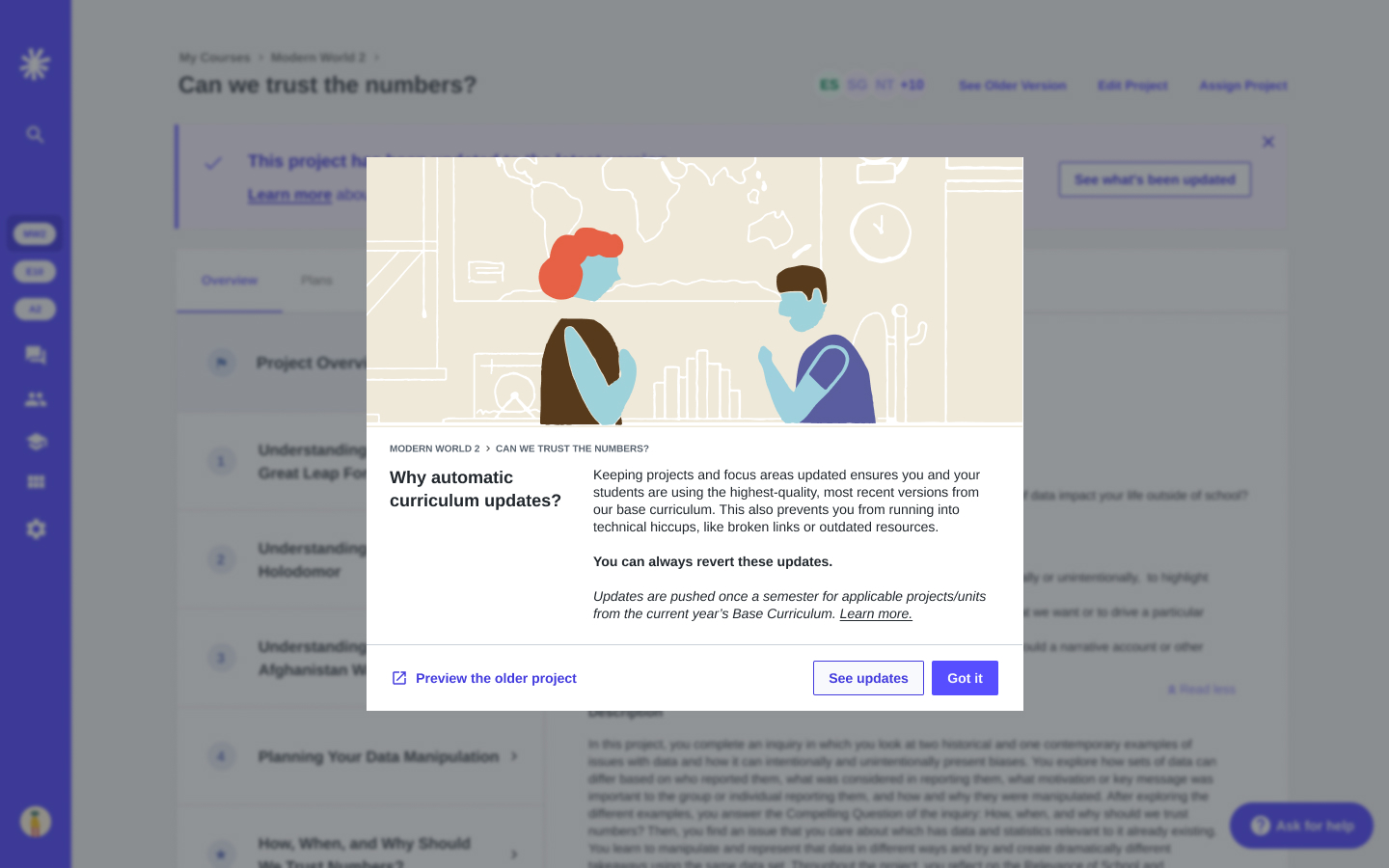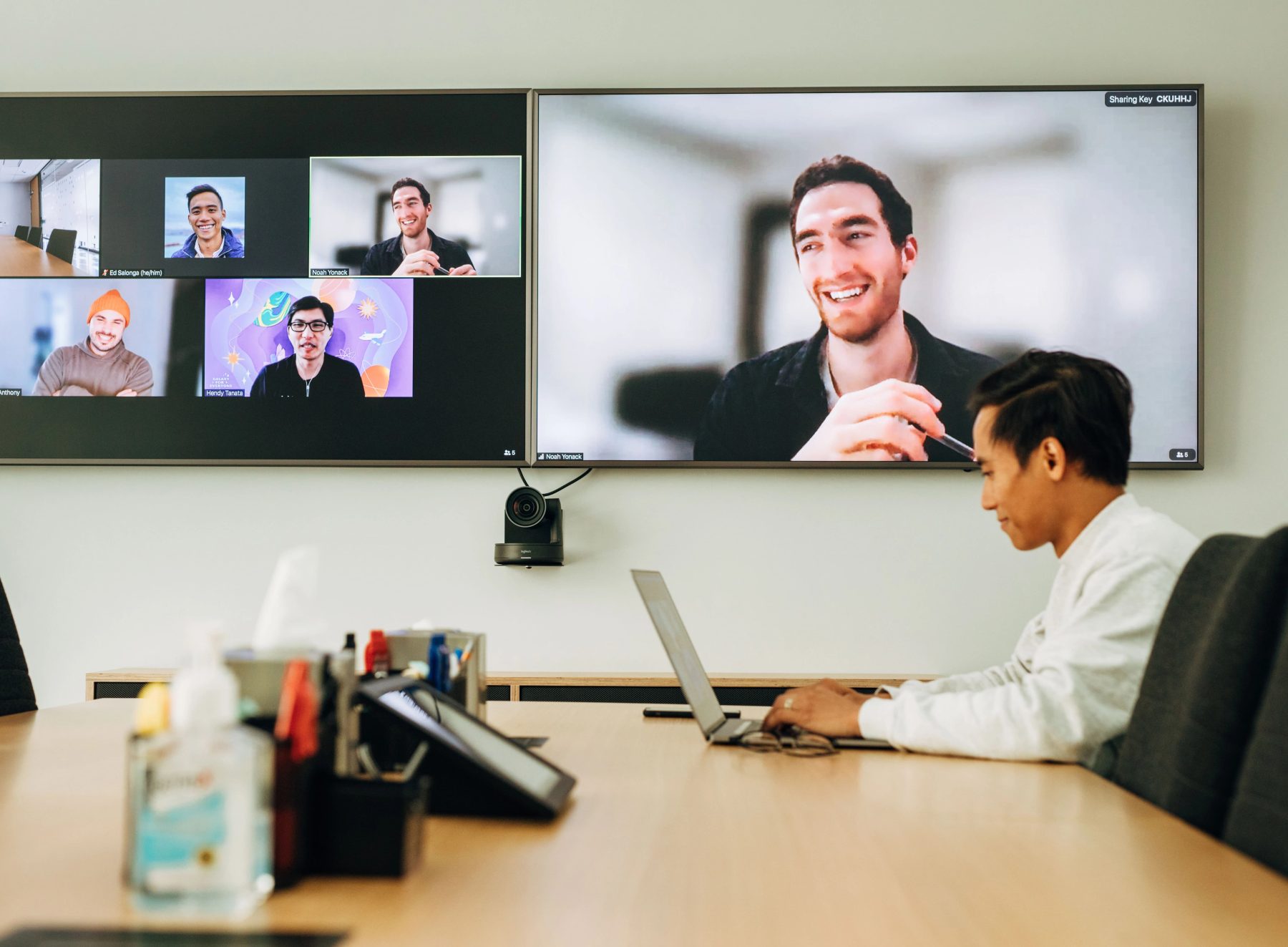The Chan Zuckerberg Initiative (CZI) is committed to leveraging our core principles of collaboration, openness and diversity, equity and inclusion, to realize a better future for all. In doing so, we build tools for educators that enable them to better engage all students and achieve whole child outcomes. From software development to research analysis, CZI’s “Tech Talks” series features members of our technology teams working to develop tools that drive innovation and create impact.
We partner with Gradient Learning, a nonprofit organization led by educators, to create learning experiences and tools like those found in Summit Learning to help teachers differentiate learning experiences equitably and foster strong connections with their students.
As part of the ongoing development of the Summit Learning platform, the technology that supports Summit Learning, a round of back-to-school updates were recently launched to improve the educator and student’s learning experience on the platform. The platform updates touched both program and software elements and was a collaborative effort across product management, engineering, data science and design. In this edition of Tech Talks, we connect with four members of the team that works with Gradient Learning to implement curriculum on the platform.
Let’s introduce a few members of the team:
Anthony Sarni is the product manager, responsible for the team’s vision as well as spearheading cross-functional collaboration to turn ideas into reality. Anthony has spent his career in tech and has been focused on product for over a decade.
Hendy Tanata is a full stack software engineer. From product to software development and backend technology, he has previously worn numerous hats at early stage startups.
Noah Yonack is a product-focused data scientist. His work involves leveraging insights from educators to inform the product’s overall direction. Prior to CZI, Noah worked as the only data scientist at a small technology startup in San Francisco.
Ed Salonga is a product designer, focused on understanding the needs of teachers and generating new product ideas to meet those needs. Ed previously designed identity protection and privacy tools at McAfee, where his experience building for diverse international audiences sharpened his focus on accessibility, inclusivity, and product quality.
When we solve a problem in such a way that it can help a huge chunk of our teachers and students, it feels like we’ve found a diamond in a coal mine. It’s a much more challenging and rewarding process than I would’ve imagined before arriving at CZI.
Tell us about the CZI technology you are currently working on?
We work on the Summit Learning program, which is a research–based approach to education developed by Gradient Learning, in partnership with CZI. The program drives student engagement, meaningful learning, and strong student–teacher relationships that prepare students for life beyond the classroom. CZI’s technology team leads the development and continual improvement of a tech platform that supports teachers and students using Summit Learning. The platform’s resources align with the program’s three key components:projects, self-direction and mentoring. Educators engage with the platform to customize the education curriculum for their specific students, as well as select relevant educational resources. The Summit Learning program supports more than 80,000 students across the U.S.
The team of educators and researchers at Gradient Learning continually provides professional development and training through the Summit Learning program, as well as updates the curriculum offered in the program. Our team at CZI recently launched an enhanced user experience to support how teachers engage with and customize curriculum materials in the accompanying platform. As part of this update, we built technology that makes updates to the curriculum automatically available without disrupting any of the teachers’ previous customizations to the curriculum, walks them through elements where their input is required, and gives them the option to revert the update.
The automatic updates are rolled out in two different ways. First, for people who haven’t yet customized the project, we indexed on making the process frictionless. This means the process requires no user action. However, for those who have customized the project, we built an easy to use wizard that guides them through new updates from Gradient Learning.
What problem are you looking to solve?
Previously, when curriculum updates were published, the platform required teachers to invest considerable time by reviewing and accepting each individual update. Updates were released throughout the academic year, which was challenging for teachers because instruction had already begun. As a result of these challenges, the update implementation rate was very low. To address these challenges, we built an automatic update system paired with an in-platform user interface guide to provide structure and context, while also consolidating update releases to just two days per year. Through this multi-pronged approach, we were able to significantly increase the rate at which updates were implemented.
Why does this problem resonate with your team?
It highlighted a huge missed opportunity — to make it efficient for classrooms to implement and utilize the best available curriculum from Gradient Learning. Our goal is that the user-interface detailing the updates and the auto-update solution will make it easier for teachers to use and customize the best available curriculum.
How have you been involved in advancing the technology on your team?
In addition to the larger collaborative effort that went into updating the implementation of updates to the curriculum , each member had their own distinct starting point and contributions.
Anthony:
Building the new project update experience involved making changes to the Summit Learning program model that were reflected in software. On the program side, I collaborated with our partners at Gradient Learning to consolidate all project updates to just two days a year. This approach gave teachers more certainty about when updates were available so they could use our platform with confidence. On the software side, I worked with the scrum team to paint the constraints for the solutions we wanted to pursue: a transparent but automatic update system that was clever enough to apply updates on the teacher’s behalf where appropriate, and an intuitive user interface that was able to move teachers through scenarios where their input was required.
Taken together, the program and software changes formed a product vision where curriculum updates are as seamless as possible, only requiring intervention where absolutely necessary, so teachers are able to focus on instruction and student needs rather than being burdened by administrative work.
Hendy:
I implemented a feature that allows us to auto-update the projects that are not customized by teachers. We needed to figure out how to systematically and consistently identify whether a project had been customized. This is quite challenging because projects have many parts.
Noah:
My involvement came through a collaboration with Hendy. He developed the means to determine whether curriculum had already been customized by a teacher, and I analyzed his solution to determine if there were anomalies that needed addressing before we shipped. Through our collaboration, we were able to double the accuracy of this model, which has real-world implications for the teachers and students we serve.
Ed:
I visualized how we inform teachers about automatic updates and redesigned how we present update descriptions. Through research, we learned that teachers found our new approach easier to discover and read, which gave us confidence that we were building in the right direction.

The Summit Learning platform team developed an enhanced system for sending updates to all of the existing projects across the tool. The updated projects saved countless hours of teachers’ time and ensures they and their students have access to the best curriculum available from Gradient Learning.
Can you share a little bit about the technologies used to build the Summit Learning platform?
We use Ruby on Rails on the backend and React on the frontend. We use type checking on both backend (Sorbet) and frontend (Flow) to prevent the kind of errors that typically happen when using dynamic programming languages.
We also use the Education Design System, which is an open source set of user interface (UI) components that the CZI Edu team is developing. This enables us to have a consistent and accessible UI. In addition to automating updates, this project allowed us to build and incorporate new UI.
What makes this meaningful or emerging technology?
We built this feature because we wanted to reduce the number of classrooms that were assigning out-of-date content to students. The Curriculum & Assessment team at Gradient Learning shipped updates to all of the existing projects across the platform. Had it not been for our auto-update system, teachers across the platform would have had to make thousands and thousands of extra reviews that we were instead able to make for them, allowing them to use that time to focus on their students.
How are you seeing this tool make a difference in education?
Time is the most important resource a teacher has. Every extra hour spent doing administrative tasks is an hour that could have been spent with students instead. We kept this principle close as we imagined, designed, and built the auto-update system.
How can this feature make a difference 1 year from now, 10 years from now and 50-100 years from now?
We’re currently working on the next version of the project auto-updater. I hope that as we refine this solution or even drastically change our approach to the problem, we eventually get to a point where using the best available curriculum is a given.
The Chan Zuckerberg Initiative is a new kind of philanthropic organization focused on engineering change at scale. Interested in joining one of our product design teams to build software and support our partners developing tools to accelerate science and education? Explore CZI career opportunities now.

